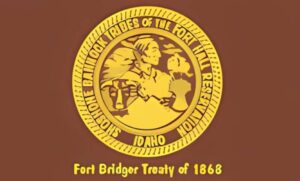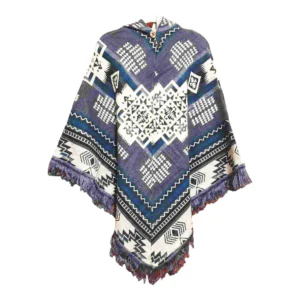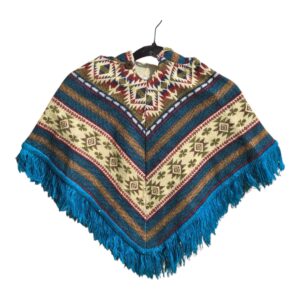The Shoshone-Bannock Tribes of the Fort Hall Reservation are a vibrant and resilient Native American community located in southeastern Idaho. Encompassing both the Shoshone and Bannock peoples, these tribes share a rich cultural heritage, deeply rooted traditions, and a unique historical narrative. Established in 1867,the Fort Hall Reservation serves as a sanctuary for their rich history and plays a pivotal role in preserving their cultural identity. Today, approximately 6,000 members inhabit the reservation, which spans over 500 square miles and is characterized by stunning landscapes of rolling hills, rivers, and high plains.
The Shoshone-Bannock Tribes are known for their conventional practices, including the art of beadwork, intricate basketry, and storytelling, which passes down their ancestral knowledge. They also celebrate various cultural events, such as the Annual Shoshone-Bannock Festival, which showcases traditional dances, games, and food, bringing together community members and visitors alike. Moreover,the tribes actively engage in economic development projects,including agriculture,tourism,and gaming,which play a critical role in fostering sustainable growth and improving the quality of life for their members.
As stewards of their land and culture,the Shoshone-Bannock Tribes continue to advocate for their rights and sovereignty,working to preserve their language,traditions,and environment. Through education and outreach, they aim to foster a greater understanding of their history, contributions, and ongoing challenges, ensuring that their voice remains a vital part of Idaho’s diverse cultural tapestry. This introduction serves as a gateway into the dynamic world of the Shoshone-Bannock Tribes, inviting deeper exploration into their resilient spirit, cultural pride, and enduring legacy.
Origin Of The People
The Shoshone-Bannock Tribes of the Fort Hall Reservation trace their origins to ancient migrations that shaped their distinct cultural identity. The Shoshone people are believed to have descended from the Numic-speaking tribes that migrated from the Great Basin region, while the Bannock people have historical connections to the Northern Paiute.Together, these tribes have lived in the region now known as southeastern Idaho for thousands of years, utilizing the land’s diverse ecosystems for sustenance.
Archaeological evidence reveals that the ancestors of the Shoshone-Bannock tribes engaged in a semi-nomadic lifestyle, moving between seasonal territories to hunt, fish, and gather. The Great Basin and surrounding mountains provided rich resources, including game such as deer and bighorn sheep, as well as various plants like roots and berries. This ecological knowledge was essential for their survival and has been passed down through generations, cementing the tribes’ connection to their ancestral lands.
Throughout their history, the Shoshone-Bannock people adapted to changing environments and encountered various cultural influences due to trade and interaction with neighboring tribes, including the Nez Perce and Crow. In the 19th century, the arrival of European settlers and the U.S. government’s westward expansion substantially impacted the tribes, leading to forced relocation and a loss of traditional lands. However, the resiliency of the Shoshone-Bannock tribes ensured that their cultural heritage and spiritual practices endured, allowing them to maintain a strong sense of identity.
Today, the Shoshone-Bannock Tribes of the Fort Hall Reservation continue to celebrate their rich history through cultural events, traditional practices, and community initiatives. The preservation of their language, ceremonies, and art forms plays a crucial role in fostering a deep connection to their past while navigating the complexities of modern life. This blend of historical importance and contemporary resilience underscores the enduring legacy of the Shoshone-Bannock tribes in the story of the American West.
Tribal Homelands
The Shoshone-Bannock Tribes of the Fort Hall Reservation occupy a rich and culturally significant territory in southeastern Idaho,primarily within the boundaries of the Fort Hall Indian Reservation. Established in 1867, this reservation spans approximately 544 square miles and is nestled in the scenic landscapes of the Snake River Plain.
The tribal homelands of the Shoshone-Bannock peoples are characterized by a diverse topography that includes expansive plains, rolling hills, and the majestic Rocky Mountains to the east. This varied geography has shaped the tribes’ lifestyle, traditions, and survival strategies over centuries. Historically, the Shoshone and Bannock peoples have thrived on hunting, fishing, and gathering, taking advantage of the area’s abundant resources, which include deer, elk, fish, and a multitude of edible plants.The Fort Hall Reservation serves not only as a physical homeland but also as a spiritual and cultural center for the tribes. It is here that the Shoshone-Bannock Tribes maintain their identity through traditional ceremonies, gatherings, and the preservation of language and customs. The tribes hold a profound connection to the land, viewing it as sacred and integral to their way of life.
Today, the Shoshone-Bannock Tribes continue to work towards sustainable development that honors their heritage while adapting to contemporary challenges. Education and economic opportunities are pivotal for the tribes, as they seek to empower future generations while preserving their ancestral lands. Significant efforts are underway to enhance tourism through cultural programs, offering visitors insight into the rich history and traditions of the Shoshone-Bannock peoples.
The tribal homelands are also a reflection of resilience and adaptability, showcasing the Shoshone-Bannock Tribes’ commitment to their cultural legacy, environmental stewardship, and community development. Exploring the Fort Hall Reservation provides a unique chance to connect with the living history and ongoing story of the Shoshone-Bannock Tribes, highlighting their deep-rooted connection to their land and the enduring spirit of their people.
Interactions With Settlers
The Shoshone-Bannock Tribes of the Fort Hall Reservation have a rich history marked by complex interactions with settlers, which encompassed both positive and negative experiences.
On the positive side, some settlers formed cooperative relationships with the Shoshone-Bannock people, notably in areas of trade and cultural exchange. These interactions provided opportunities for the tribes to acquire new goods, tools, and agricultural practices, which enhanced their traditional ways of living. For instance, settlers introduced metal tools and weapons that improved hunting and gathering efficiency. Additionally, mutual cooperation in farming initiatives enriched the agricultural capabilities of both communities, leading to a stronger food supply.
Though, the arrival of settlers also brought significant challenges and adverse effects for the Shoshone-Bannock Tribes. The influx of newcomers resulted in territorial disputes over land usage and resources, as settlers encroached on traditional hunting grounds and sacred sites. Tensions escalated as settlers often disregarded treaties negotiated by tribal leaders, leading to a loss of land and autonomy for the tribes.
Moreover, the introduction of diseases brought by settlers decimated local populations, significantly affecting community structure and resilience. The Shoshone-Bannock tribes experienced devastating losses, creating a ripple effect on their social and cultural fabric. During this tumultuous period, the tribes faced the arduous task of adapting to a rapidly changing environment while striving to preserve their identity.
the interactions between the Shoshone-Bannock Tribes of the Fort Hall Reservation and settlers were marked by both cooperation and conflict. While some settlers contributed positively through trade and cultural exchanges, the broader impact was frequently enough detrimental, leading to significant challenges that the tribes continue to navigate in preserving their heritage and autonomy.
Most Notable Events In Their Tribal History
The Shoshone-Bannock Tribes of the Fort Hall Reservation have a rich and complex tribal history marked by resilience, cultural richness, and significant events that have shaped their identity. One of the most notable events is the Treaty of Fort Bridger in 1868, which established a reservation for the Shoshone and Bannock peoples in what is now southeastern Idaho. This treaty was crucial as it recognized their rights to the land, laying the foundation for future generations.
Another pivotal moment came during the Bear River Massacre in 1863,where U.S. Army troops attacked a Bannock village,resulting in the deaths of hundreds of tribal members. This tragic event serves as a sobering reminder of the violent struggles that Native Americans faced while resisting encroachment on their lands and way of life. The trauma from this incident has resonated through generations and is an essential part of tribal storytelling.In the early 20th century, the Shoshone-Bannock Tribes faced further challenges with the passage of the Indian Reorganization Act in 1934. This act aimed to reverse some of the damage done by previous policies, allowing tribes to establish self-governance.The Shoshone-Bannock people seized this opportunity to create a constitution and establish their tribal government in 1936, asserting their sovereignty and commitment to self-determination.The 20th century also saw significant strides in education and cultural preservation for the Shoshone-Bannock Tribes. In the 1970s, the tribes began developing programs to revitalize their languages, traditions, and cultural practices, ensuring that younger generations would carry on their heritage. The establishment of the Shoshone-Bannock Tribal Business Council in 1982 further empowered the tribes, facilitating economic development initiatives and improving the community’s quality of life.
Another defining event occurred in 1990 when Congress passed the Native American Graves Protection and Repatriation Act (NAGPRA), which addressed the repatriation of Native American cultural items to their respective tribes. The Shoshone-Bannock Tribes actively participated in this movement, successfully reclaiming ancestral remains and cultural artifacts, which strengthened their cultural integrity.
The last few decades have also seen the growth of successful enterprises on the Fort Hall Reservation, including the Fort Hall Casino, which has become a crucial economic lifeline for the community. Such developments have enabled the Shoshone-Bannock Tribes to fund various educational, social, and health initiatives, underscoring the tribes’ resilience and adaptability in the face of ongoing challenges.
Through these notable events and milestones in their tribal history, the Shoshone-Bannock Tribes of the Fort Hall Reservation have demonstrated a profound commitment to preserving their culture and sovereignty, creating a legacy that continues to inspire future generations.
Where Are Their Tribal Lands Now And How Were They Established
The Shoshone-Bannock Tribes, comprised of the Shoshone and Bannock peoples, currently reside on the Fort Hall Reservation, located in southeastern Idaho.This reservation encompasses approximately 544 square miles, covering parts of Power, Bingham, and Bannock counties. Home to around 5,000 enrolled members, the Fort Hall Reservation serves as a cultural and economic hub for the tribes, preserving their ancestral heritage while fostering community development.
The establishment of the Fort Hall Reservation dates back to the mid-19th century,shaped largely by treaties and U.S. government policies aimed at managing Native American lands. The Fort Bridger Treaty of 1868 was a significant turning point, as it initially established the Shoshone and Bannock as a unified tribal entity and delineated land for their exclusive use. However, subsequent legislation led to land reduction and allotments that fragmented their holdings, pushing the tribes into challenges with land rights and resource management.
In the early 20th century, efforts to reclaim tribal lands and assert sovereignty became increasingly prominent. The 1934 Indian Reorganization Act allowed for enhanced self-governance, enabling the Shoshone-Bannock Tribes to regain some control over their land and resources. Today,they engage in various economic activities,including agriculture,forestry,and casino gaming,which contribute to the sustainability and revitalization of their community.
Modern tribal governance is guided by the Shoshone-Bannock Constitution, ensuring the preservation of traditions while adapting to contemporary society. The tribes remain dedicated to protecting their lands and promoting cultural education, thereby maintaining a vibrant connection to their history and identity even amidst the ongoing challenges of modern life. The rich cultural landscape of the Fort Hall Reservation continues to inspire pride among its members and offers a testament to the resilience of the Shoshone and Bannock peoples.
Modern Concerns Of The Tribe
The Shoshone-Bannock Tribes of the Fort Hall Reservation face a variety of modern concerns that intertwine cultural preservation, economic development, and environmental sustainability. One pressing issue is the protection of their land and resources. As the demand for natural resources increases, the tribe actively advocates for the preservation of their ancestral lands, which hold significant cultural and spiritual meaning.They work diligently to protect these areas from development that could disrupt their way of life or harm the environment.
Economic development remains a crucial concern, as the tribe seeks to diversify its revenue sources beyond traditional means. The Fort Hall Reservation has made strides in developing tribal enterprises, including gaming, agriculture, and tourism. However, balancing economic growth with cultural integrity is a constant challenge.The tribe emphasizes the importance of creating opportunities that benefit the community while honoring Shoshone and Bannock traditions.
Education is another critical area of focus. The Shoshone-Bannock Tribes strive to improve educational outcomes for their members by investing in programs that promote cultural education alongside academic achievement. Encouraging youth to embrace their heritage while gaining the skills necessary for success in a modern economy is paramount for the tribe’s future sustainability.Environmental concerns also weigh heavily on the Shoshone-Bannock, especially in light of climate change. As stewards of the land, the tribe is dedicated to preserving their natural resources and traditional practices. They are involved in environmental initiatives aimed at safeguarding water quality, restoring habitats, and protecting wildlife. By engaging in these efforts,the tribe not only promotes ecological health but also reinforces the connection between the people and their land.
Health disparities are a significant modern challenge for the Shoshone-Bannock Tribes. Like many Indigenous communities,they face issues related to access to healthcare and chronic illness rates. The tribe works to expand healthcare services on the Fort Hall Reservation, providing culturally competent care that addresses the unique needs of their population.Nutrition education and wellness programs are also part of their strategy to improve health outcomes and foster a healthier community.
the Shoshone-Bannock Tribes of the Fort Hall Reservation are actively addressing these modern concerns with resilience and a commitment to preserving their cultural identity. By focusing on land protection,economic development,education,environmental sustainability,and health improvement,they aim to create a vibrant future that honors their rich heritage.
Events And Other Social And Political Activities
The Shoshone-Bannock Tribes of the Fort Hall Reservation engage in a variety of events and social activities that showcase their rich cultural heritage and commitment to community well-being. One of the highlights is the annual Fort Hall Indian Reservation Powwow, which draws visitors from across the region to celebrate Native American culture through traditional dancing, music, and art. This vibrant event not only serves as a platform for cultural exchange but also reinforces the bonds within the tribal community.
Throughout the year, the tribes partake in educational programs and cultural workshops aimed at preserving their traditional languages and customs. These initiatives, often held at the Shoshone-Bannock Tribal Youth Programme, empower younger generations to connect with their heritage while fostering a sense of pride and identity.
Political engagement is equally vital, as the Shoshone-Bannock Tribes actively participate in discussions related to tribal sovereignty and self-governance. The Tribal Council works diligently to address issues ranging from land rights to resource management, ensuring that the voices of the community are heard in broader political dialogues. Engagement in legislative initiatives, such as advocating for policy changes that benefit tribes at the state and national levels, reflects their commitment to safeguarding the interests of their people.
Additionally, the tribes celebrate various cultural festivals throughout the year, including the Shoshone-Bannock Treaty Day, which commemorates the signing of treaties that are significant to their history. These events often feature storytelling, traditional food, and art exhibitions, allowing tribal members and visitors to experience the depth of their cultural heritage.
Community wellness programs, including health fairs and cultural competency training sessions, are essential components of the tribe’s social activities. These events promote physical and mental health while addressing specific needs within the community, such as substance abuse prevention and mental health awareness.
By hosting these multifaceted events, the Shoshone-Bannock Tribes not only honor their past but also build a stronger foundation for future generations, fostering a sense of unity and cultural pride among their members.


















